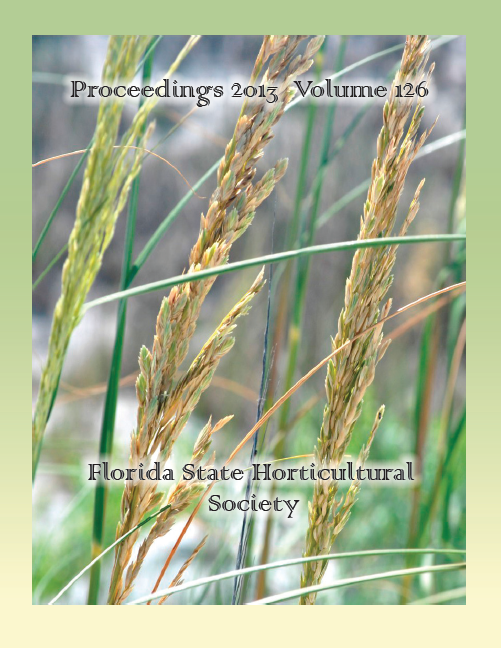Nitrogen Release from Controlled-release Fertilizers in Seepage-irrigated Tomato Production in South Florida
Published 2013-12-01
Keywords
- enhanced-efficiency fertilizer,
- pouch method,
- best management practices,
- fertilizer release duration.
Abstract
Controlled-release fertilizers (CRFs) are soluble fertilizers encapsulated in sulfur, polymer, or a sulfur covered fertilizer coated with a polymer. Manufacturers measure CRF nutrient release duration as 75% nitrogen (N) release at a constant temperature (e.g., 75 °F). Increases or decreases in temperature increase or decrease CRF N release; thus, coated fertilizer may release more rapidly than expected during the fall season when soil temperatures in polyethylenemulched seepage irrigated tomato (Solanum lycopersicum) production can reach 104 °F. The purposes of this study were to evaluate N release duration of CRFs incubated in pouches under polyethylene-mulch covered raised beds, and to determine the CRF duration suitable for incorporation into a fall tomato fertility program. Fiberglass mesh pouches (5 × 5.5 inches) containing CRFs [polymer coated urea (PCU), 90 day release (DR) (44N–0P–0K/PCU90); PCU (43N–0P–0K/PCU120) and polymer coated-NPK (19N–2.6P–10.8K /PCNPK120), 120 DR; or PCU, 180 DR (43N–0P–0K/PCU180)] from Agrium Advanced Technologies Inc. were buried 4 inches below the bed surface in a tomato crop grown using commercial production practices. A data logger collected soil temperature 4 inches below the bed surface. Pouches were collected and N content was measured eight times through the fall season. A nonlinear regression model was fitted to the data to determine N release rate. Minimum, average, and maximum soil temperatures were 57.6, 77.3, and 105.1 °F during the season. Fertilizer PCU90 had a higher N release rate compared to PCU120, PCNPK120, and PCU180, which were similar. A nonlinear regression fit all CRFs’ N release (R2 ≥0.94). Season total N release and time to 75% N release were greatest for PCU90 at 93.8% and 43 days after placement (DAP). Season total N release and time to 75% N release were similar for PCU120, PCNPK120, and PCU180 at 91.1%, 90.2%, and 91.5%, respectively and 58, 56, and 56 DAP, respectively. Nitrogen release from all CRFs was faster than the manufacturer’s stated release, probably due to high fall bed temperatures. Therefore, based on a 1-year study, a CRF with 120 DR or higher should
be recommended for use in the fall tomato season.

